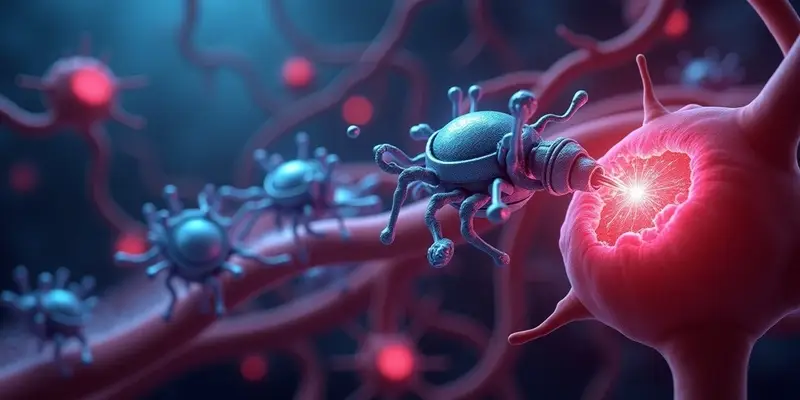- Published on: Jul 31, 2024
- 2 minute read
- By: SecondMedic Expert
What You Should Know About Liposuction
Liposuction is a popular cosmetic procedure that helps individuals remove stubborn fat deposits and achieve a more contoured body. If you're considering liposuction or just curious about the process, here's everything you need to know, explained in simple terms.
What is Liposuction?
Liposuction, also known as lipoplasty or body contouring, is a surgical procedure designed to remove excess fat from specific areas of the body. It's not a weight-loss solution but rather a method to enhance body shape and achieve a more sculpted appearance.
How Does Liposuction Work?
During a liposuction procedure, a surgeon makes small incisions in the targeted areas. A thin, hollow tube called a cannula is inserted through these incisions. The cannula is connected to a suction device that removes the fat cells from under the skin. This process is usually performed under local or general anesthesia, depending on the extent of the procedure and the patient's preference.
Common Areas Treated with Liposuction
Liposuction can be used on various parts of the body where fat tends to accumulate. Common areas include:
Abdomen: For a flatter, more toned stomach.
Thighs: To reduce inner and outer thigh fat.
Hips: For a more defined waistline.
Arms: To eliminate "bat wings" and create a sleeker appearance.
Back: To smooth out bulges and improve contours.
Chin and Neck: For a more defined jawline.
Types of Liposuction
Several techniques are used in liposuction, each with its own advantages:
Traditional Liposuction: Uses a cannula and suction to remove fat. It's effective but may require a longer recovery time.
Ultrasound-Assisted Liposuction (UAL): Uses ultrasonic waves to break down fat cells before suctioning. This method can be particularly useful for larger areas or fibrous fat.
Laser-Assisted Liposuction (LAL): Employs laser energy to liquefy fat, making it easier to remove. This technique can also promote skin tightening.
Power-Assisted Liposuction (PAL): Uses a vibrating cannula to help dislodge fat cells, making the procedure faster and less strenuous for the surgeon.
Benefits of Liposuction
Liposuction offers several benefits, including:
Improved Body Contours: Helps achieve a more proportionate and balanced body shape.
Boosted Confidence: Many people feel more confident in their appearance after liposuction.
Permanent Fat Removal: Fat cells are removed permanently, although maintaining a healthy lifestyle is crucial to prevent new fat accumulation.
Risks and Considerations
Like any surgical procedure, liposuction carries some risks and potential complications:
Infection: Though rare, infections can occur at the incision sites.
Bleeding: Some bleeding is normal, but excessive bleeding can be a concern.
Swelling and Bruising: These are common side effects that usually subside within a few weeks.
Uneven Results: Occasionally, fat removal may be uneven, leading to irregular contours.
Skin Changes: Some people may experience skin sagging or changes in skin texture.
Recovery and Aftercare
Post-liposuction recovery involves several key steps:
Rest: Allow yourself time to rest and recover. Most people can return to work within a week, but more strenuous activities should be avoided for several weeks.
Compression Garments: You will likely need to wear a compression garment to reduce swelling and support the healing process.
Hydration and Nutrition: Staying hydrated and eating a balanced diet can aid in recovery.
Follow-Up Visits: Regular follow-up appointments with your surgeon will help ensure your recovery is on track and address any concerns.
Is Liposuction Right for You?
Liposuction is not suitable for everyone. Ideal candidates are generally at or near their target weight, have realistic expectations, and are in good overall health. It's important to consult with a board-certified plastic surgeon to determine if liposuction is a good fit for your goals and body type.
Cost of Liposuction
The cost of liposuction can vary based on several factors, including the size of the area being treated, the technique used, and the surgeon's experience. On average, liposuction can range from $2,000 to $10,000 per area. It's essential to discuss the cost with your surgeon and consider any additional expenses for anesthesia and facility fees.
Conclusion
Liposuction can be an effective way to address stubborn fat deposits and achieve a more sculpted body. However, it's crucial to approach the procedure with a clear understanding of what to expect and to consult with a qualified surgeon to ensure the best possible outcome. If you're considering liposuction, take the time to research, ask questions, and carefully weigh your options to make an informed decision about your body and your health.
Read FAQs
A. Recovery time after liposuction varies depending on the extent of the procedure and individual factors. Most people can return to work within a week, but it’s recommended to avoid strenuous activities for about 4 to 6 weeks. Swelling and bruising are common but should subside over time.
A. The results of liposuction are generally long-lasting, as the fat cells removed are permanently eliminated. However, maintaining a healthy lifestyle is crucial to prevent new fat accumulation in other areas of the body. Weight gain can affect the results, so a balanced diet and regular exercise are important.
A. Yes, like any surgical procedure, liposuction carries risks. Potential risks include infection, bleeding, uneven fat removal, skin changes, and swelling. It's essential to discuss these risks with a qualified surgeon and follow all post-operative care instructions to minimize complications.










